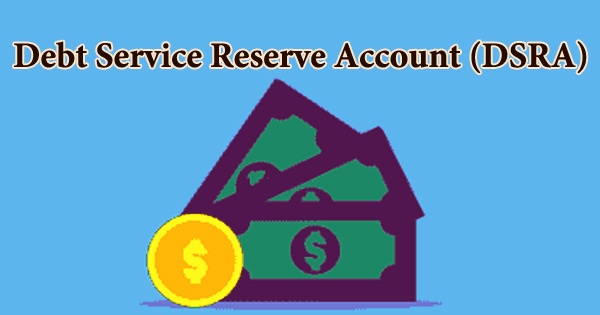A simplified employee pension (SEP) is an individual retirement account (IRA) that an employer or a self-employed person can establish. SEP IRAs are for business owners, and contributions are tax-deductible. Investments grow tax-deferred until retirement when distributions are taxed as income. Additionally, under the Setting Every Community Up for Retirement Enhancement (SECURE) Act, which was enacted on Dec. 20, 2019, small employers get a tax credit to offset the costs of starting a 401(k) plan or SIMPLE IRA with auto-enrollment. That’s on top of the start-up credit they already receive.
The world of retirement planning can seem daunting when faced with the many options available to business owners today. Generally, SEP IRAs are best for self-employed people or small-business owners with few or no employees. SEP IRAs often have higher annual contribution limits than standard IRAs. A SEP (Simplified Employee Pension) also requires minimal compliance and documentation when compared to many other pension plans. Fundamentally, a SEP IRA can be considered a traditional IRA with the ability to receive employer contributions. One major benefit it offers employees is that employer contributions are vested immediately.
SEP IRAs are actually used by small businesses and self-employed individuals to meet their retirement savings needs. Similar to other, more complicated retirement options, a SEP (Simplified Employee Pension) offers a way to provide our employees with a tax advantaged savings plan, while minimizing start-up and maintenance costs to us. A SEP IRA is an attractive option for many business owners because it does not come with many of the start-up and operating costs of most conventional employer-sponsored retirement plans. Many employers also set up a SEP IRA to contribute to their own retirement at higher levels than a traditional IRA allows.

SEPs offer flexible planning, limited liability, and the option to make employer contributions. Employees get the freedom to direct their investments in individual SEP IRAs, eliminating the challenge of selecting which plans are best to offer. Small organizations favor SEP IRAs because of eligibility requirements for contributors, including a minimum age of 21, at least three years of employment, and a $600 compensation minimum. In addition, a SEP IRA allows employers to skip contributions during years when business is down.
As an entrepreneur, we can choose every year on the off chance that we need to contribute or not. On the off chance that we do, our commitments are charge deductible and our representatives are promptly 100% vested; setting aside our cash at charge time while assisting us with obtaining and hold extraordinary workers. SEP IRAs are taxed the same as conventional IRAs and offer the same investment options. SEP IRAs are subject to the same transition and rollover laws as conventional IRAs.
In a typical IRA, we will contribute up to $6,000 per year (the annual limit in 2020 and 2021; $7,000 if you’re 50 or older). We will stockpile nearly ten times that amount with a SEP IRA, up to $57,000 in 2020 and $58,000 in 2021. Annual contribution limits for SEP IRAs, on the other hand, cannot surpass the lesser of:
- 25% of compensation
- $57,000 in 2020 or $58,000 in 2021
The first limit, 25% of pay, also applies to the amount of money we will contribute for each qualifying employee. In 2020 and 2021, the amount of compensation we will use to measure the 25% limit is limited to $285,000 and $290,000, respectively.
At the point when a business makes commitments to SEP IRA accounts, it gets an expense allowance for the sum contributed. Furthermore, the business isn’t secured to a yearly commitment choice about whether to contribute and what amount can change every year. One extraordinary benefit of a SEP is their generally straightforwardness. There is no need to create a corporate fund to contribute to the SEP since each employee has their own SEP IRA. There are also no annual reporting provisions, which saves us time and money.
The business isn’t answerable for settling on speculation choices. All things being equal, the IRA trustee decides qualified ventures, and the individual representative record proprietors settle on explicit speculation choices. The trustee additionally stores commitments, sends yearly articulations, and records all necessary reports with the IRS. Employer contributions do not decrease the amount we may contribute to an IRA for ourselves if we are an employee covered by a SEP IRA, but the amount of our conventional IRA contribution that we may subtract could be decreased at some higher income levels due to the combination of both plans.
Some financial institutions require a conventional IRA to be classified as a SEP IRA before allowing SEP contributions to be made. Others will accept SEP contributions into a conventional IRA, regardless of whether or not the IRA is designated as a SEP IRA. There are only a few steps to creating a SEP for our business.
- Create a structured arrangement that all qualified workers will receive the SEP. This agreement needs to be finalized before our tax deadline (but includes any approved extensions).
- Provide information about the SEP package to any qualifying workers.
- Ascertain that all qualifying workers have a SEP-IRA. Employers should set up an account for workers who are entitled to donations but are unable or unable to do so on their own.
Commitments to a SEP IRA are quickly 100% vested, and record proprietors should pick their speculations themselves from a rundown given by the record trustee. The IRS requires a representative to be qualified to take an interest in a SEP on the off chance that they are: 21 years old, have worked three of the past five years for the business, and acquired at least $600 each year. Employers are free to reduce eligibility conditions if they see fit, but they can never limit participation further. Since a SEP plan’s funding source is a traditional IRA, SEP contributions become traditional IRA assets once deposited and are subject to many of the traditional IRA regulations, including the ones mentioned below:
- Distribution rules
- Investment rules
- Traditional IRA contribution and deduction rules, which apply to the employee’s daily IRA contributions rather than the SEP employer contributions
- Documentation requirements for establishing an IRA
Notwithstanding the reports needed for setting up a SEP plan, every SEP-IRA should meet the documentation prerequisites for a customary IRA. SEP commitments and profit might be turned over tax-exempt to different IRAs and retirement plans. SEP earnings and donations must finally be allocated in accordance with the IRA’s required minimum distribution rules. As an employer, we want to look out for our employees, but our time is better spent pursuing our company’s objectives.
Finally, compared to Keogh profit-sharing and pension schemes, SEPs are much easier to set up and manage. It just takes a few minutes to get started with a bank, brokerage firm, or insurance company, and most of the time there is no cost. There are no annual government reports needed, and there are no ongoing administrative costs. SEPs are just as simple as deductible IRAs, but they allow for much larger donations.
Information Sources:
















